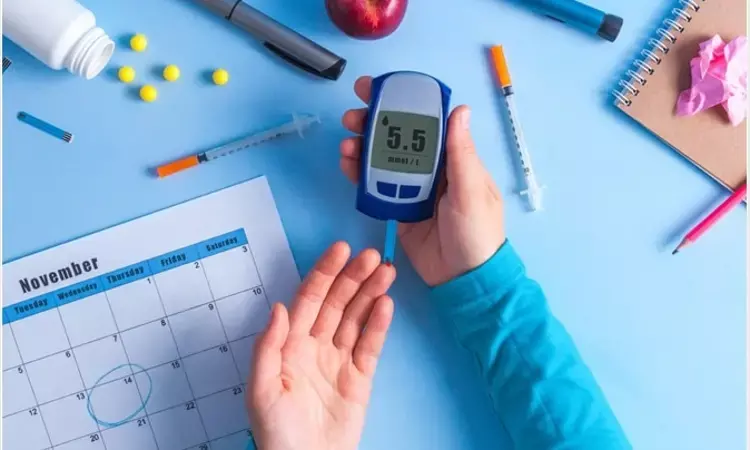- Home
- Medical news & Guidelines
- Anesthesiology
- Cardiology and CTVS
- Critical Care
- Dentistry
- Dermatology
- Diabetes and Endocrinology
- ENT
- Gastroenterology
- Medicine
- Nephrology
- Neurology
- Obstretics-Gynaecology
- Oncology
- Ophthalmology
- Orthopaedics
- Pediatrics-Neonatology
- Psychiatry
- Pulmonology
- Radiology
- Surgery
- Urology
- Laboratory Medicine
- Diet
- Nursing
- Paramedical
- Physiotherapy
- Health news
- Fact Check
- Bone Health Fact Check
- Brain Health Fact Check
- Cancer Related Fact Check
- Child Care Fact Check
- Dental and oral health fact check
- Diabetes and metabolic health fact check
- Diet and Nutrition Fact Check
- Eye and ENT Care Fact Check
- Fitness fact check
- Gut health fact check
- Heart health fact check
- Kidney health fact check
- Medical education fact check
- Men's health fact check
- Respiratory fact check
- Skin and hair care fact check
- Vaccine and Immunization fact check
- Women's health fact check
- AYUSH
- State News
- Andaman and Nicobar Islands
- Andhra Pradesh
- Arunachal Pradesh
- Assam
- Bihar
- Chandigarh
- Chattisgarh
- Dadra and Nagar Haveli
- Daman and Diu
- Delhi
- Goa
- Gujarat
- Haryana
- Himachal Pradesh
- Jammu & Kashmir
- Jharkhand
- Karnataka
- Kerala
- Ladakh
- Lakshadweep
- Madhya Pradesh
- Maharashtra
- Manipur
- Meghalaya
- Mizoram
- Nagaland
- Odisha
- Puducherry
- Punjab
- Rajasthan
- Sikkim
- Tamil Nadu
- Telangana
- Tripura
- Uttar Pradesh
- Uttrakhand
- West Bengal
- Medical Education
- Industry
Diabetes: Blood sugar variability increases mortality risk, finds study

Israel: Higher variability in blood sugar levels is linked to increased mortality risk in adults with diabetes, a recent study has found.
The study, published in the journal Diabetes/Metabolism Research and Reviews, showed that increasing HbA1c variability and progressive elevation in HbA1c (>7%) were associated with a higher risk of mortality. The data highlight the significance of maintaining glycemic stability and encourages physicians to consider the glycemic burden of their patients while evaluating prognosis.
Avivit Cahn, Hadassah Hebrew University Hospital, Jerusalem, Israel, and colleagues aimed to determine the optimal variables which should be used to define distinct cohorts of HbA1c trends by utilizing machine learning methods.
For this purpose, the researchers collected data on patients with diabetes listed in the Israeli National Diabetes Registry during years 2012–2016 (observation period). Patients with >4 HbA1c measurements, type 1 diabetes, eGFR < 30mg/ml/min, persistent HbA1c < 6% or malignancy were excluded. patients were classified into clusters according to their HbA1c trend (increasing, stable, decreasing) by utilizing machine learning methods.
Mortality risk during 2017–2019 was calculated in subgroups defined by age (35–54, 55–69, 70–89 years) and last HbA1c (≤7% and >7%) at end of the observation period.
This historical cohort study included 293,314 patients.
Key findings of the study include:
- Increased HbA1c variability (high SD) during the observation period was an independent predictor of mortality in patients aged more than 55 years.
- The HbA1c trend was another independent predictor of mortality.
- Patients with a decreasing versus stable HbA1c trend had a greater mortality risk; this association persisted in all age groups in patients with HbA1c > 7% at the end of the observation period (in age 35–54; in aged >55).
- Patients with an increasing versus stable HbA1c trend had a greater mortality risk only in the elderly group (>70), yet in both HbA1c categories.
HbA1c variability and trend are important determinants of mortality risk and should be considered when adjusting glycemic targets, concluded the authors.
Reference:
The study titled, "Machine learning based study of longitudinal HbA1c trends and their association with all-cause mortality: Analyses from a National Diabetes Registry," is published in the journal Diabetes/Metabolism Research and Reviews.
DOI: https://onlinelibrary.wiley.com/doi/10.1002/dmrr.3485
Dr Kamal Kant Kohli-MBBS, DTCD- a chest specialist with more than 30 years of practice and a flair for writing clinical articles, Dr Kamal Kant Kohli joined Medical Dialogues as a Chief Editor of Medical News. Besides writing articles, as an editor, he proofreads and verifies all the medical content published on Medical Dialogues including those coming from journals, studies,medical conferences,guidelines etc. Email: drkohli@medicaldialogues.in. Contact no. 011-43720751


